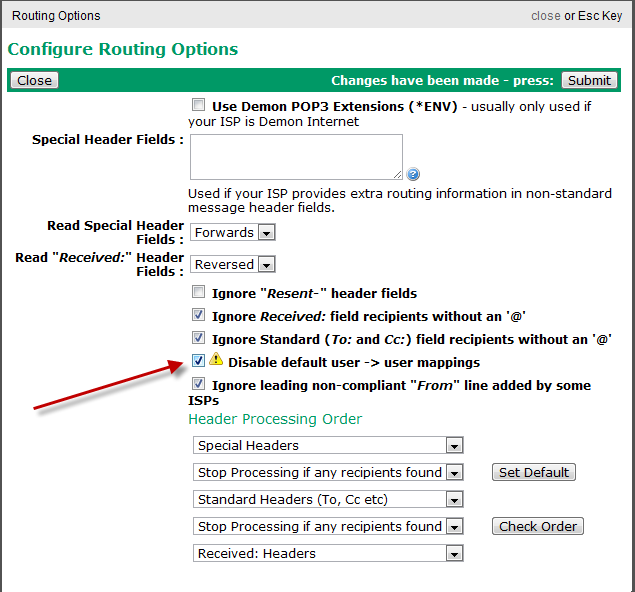Sidebar
Table of Contents
Handling mail for multiple incoming domains
VPOP3 can easily handle mail for several incoming domains.
Exactly how you do it depends on the exact situation.
All domains are 'aliases'
If the domains are aliases of each other, for instance, you have 'mycompany.com' and 'mycompany.org', both of which are the same, so each address at mycompany.com also exists at mycompany.org, and the emails go to the same people regardless of which domain is used, then you simply configure the domains in the mail collector(s) accordingly, and don't need to do anything else
For instance, if you have one catch-all POP3 mailbox at the ISP which collects mail for both domains, you would simply put both domains into the Accepted Domains box for that collector in VPOP3, separated by a semicolon

Or, if you have several catch-all POP3 mailboxes at the ISP, simply create multiple collectors in VPOP3, each with the appropriate Accepted Domains setting
Or, if you have an incoming SMTP feed, then put all the domains into the Local Domains box, separated by semicolons.
All domains are different
If your domains are different, so that, for instance, mail for mike@company1.com has to be kept separate from mail for mike@company2.com, then use Mappings
In this case, you may create users called mike1 and mike2, then create two Mappings: mike@company1.com → mike1, and mike@company2.com → mike2. (The actual names of the users don't matter, you could use 'mike.company1', or whatever is easier for you)
Preventing normal <username>@<domain> -> <username> distribution
With the normal settings, this will work for cases where most users are the same on both domains, but where there are a few exceptions. Also, in this example, sending a message to mike1@company2.com would still go to the mike1 user, even though 'mike1' should only be associated with company1. To stop this happening, go to the Mail Collector, go to the POP3 Routing → Configure Routing Options window, then check the Disable default user → user mappings box, and press Submit.

Once you have done that you MUST create mappings for all the email addresses you use, as VPOP3 won't assume that each user has a 'username@accepted-domain' address as it normally does.
